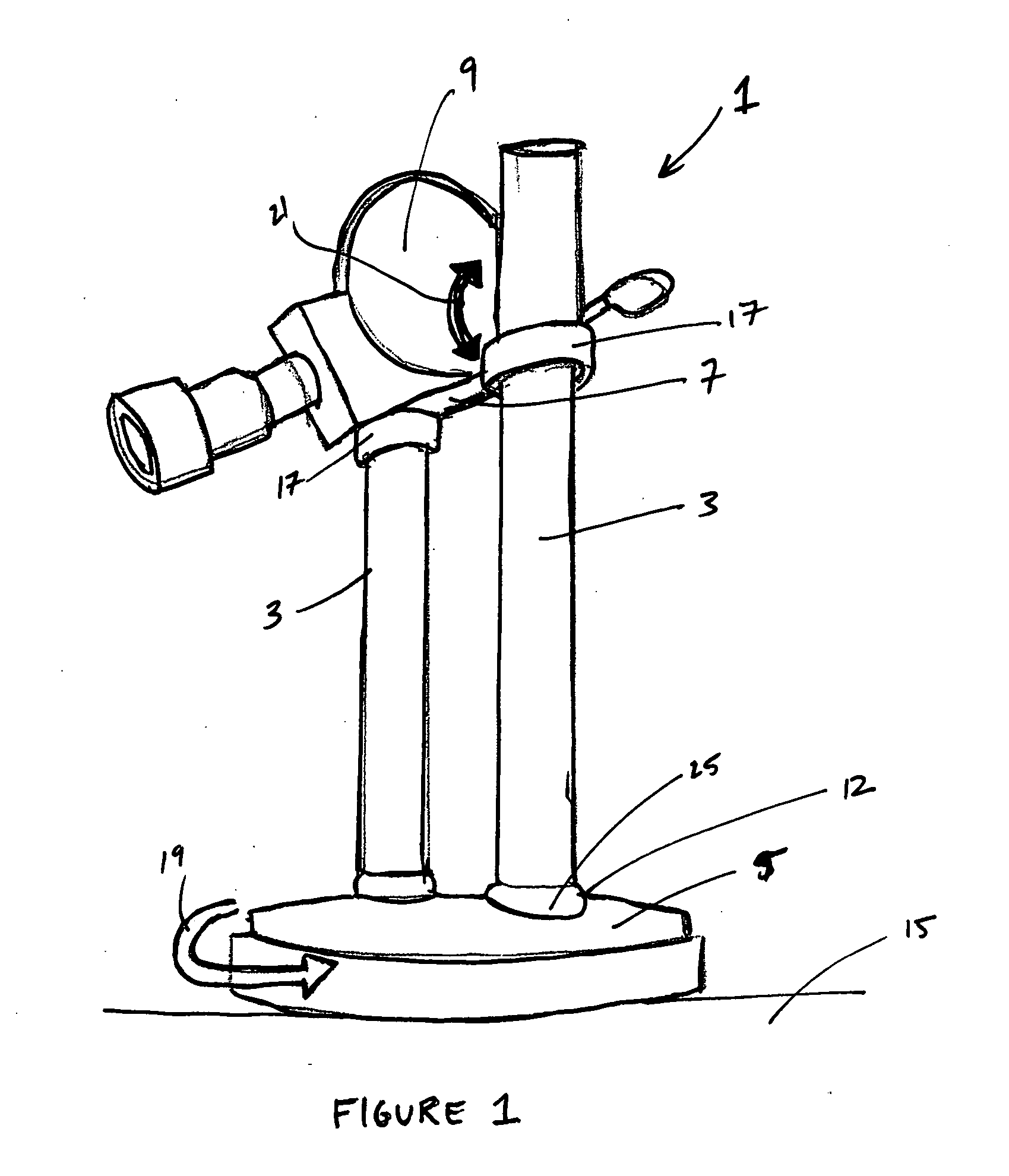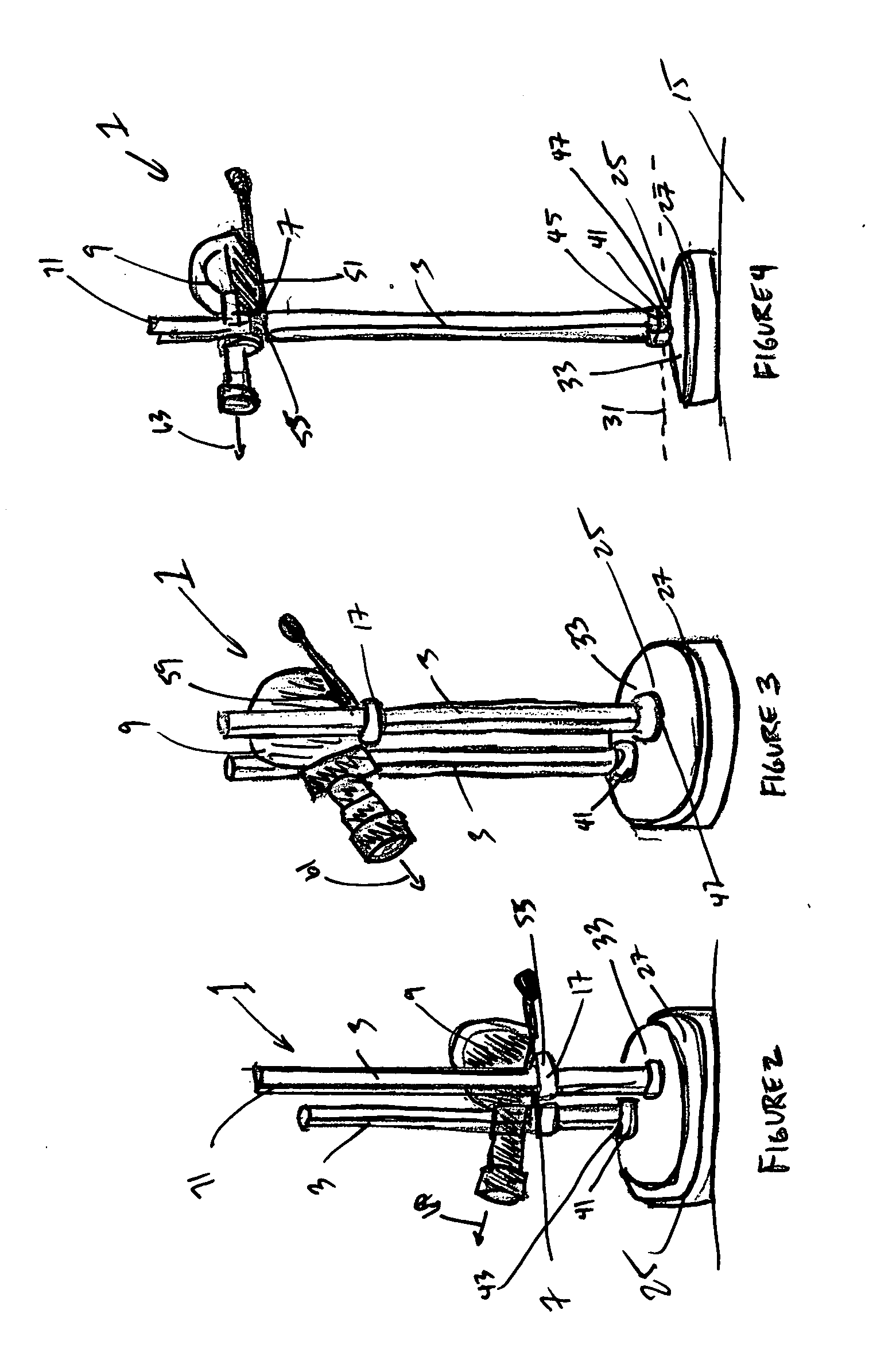Bipod platform system for a camera
a technology of tripods and platforms, applied in the field of photography, can solve the problems of reducing the light on film or other medium, affecting so as to improve the stability of the tripod, improve the transport of the platform system, and reduce the risk of parts breaking
- Summary
- Abstract
- Description
- Claims
- Application Information
AI Technical Summary
Benefits of technology
Problems solved by technology
Method used
Image
Examples
Embodiment Construction
[0085] Turning now to the drawings wherein elements are identified by numbers and like elements are identified by like numbers throughout the 13 figures, the invention is depicted in FIG. 1 and shows a new platform system 1 to be used in photography.
[0086] Referring first to FIG. 1, a platform system 1 is provided. The platform system 1 may include in an exemplary embodiment, two substantially parallel legs 3, a universal rotatable base 5, and a platform 7 to support the camera 9.
[0087] It should be appreciated that while preferred embodiments utilize two substantially parallel legs, the camera could be mounted to more or less than two legs so long as it is sufficiently supported. The substantially parallel legs 3 can be configured so as to be extendible and collapsible, and in that respect, they can be telescoping or extendible by addition of extra lengths which is further illustrated in FIG. 6. In any case, regardless of how high the substantially parallel legs 3 extend, the cam...
PUM
 Login to View More
Login to View More Abstract
Description
Claims
Application Information
 Login to View More
Login to View More - R&D
- Intellectual Property
- Life Sciences
- Materials
- Tech Scout
- Unparalleled Data Quality
- Higher Quality Content
- 60% Fewer Hallucinations
Browse by: Latest US Patents, China's latest patents, Technical Efficacy Thesaurus, Application Domain, Technology Topic, Popular Technical Reports.
© 2025 PatSnap. All rights reserved.Legal|Privacy policy|Modern Slavery Act Transparency Statement|Sitemap|About US| Contact US: help@patsnap.com



